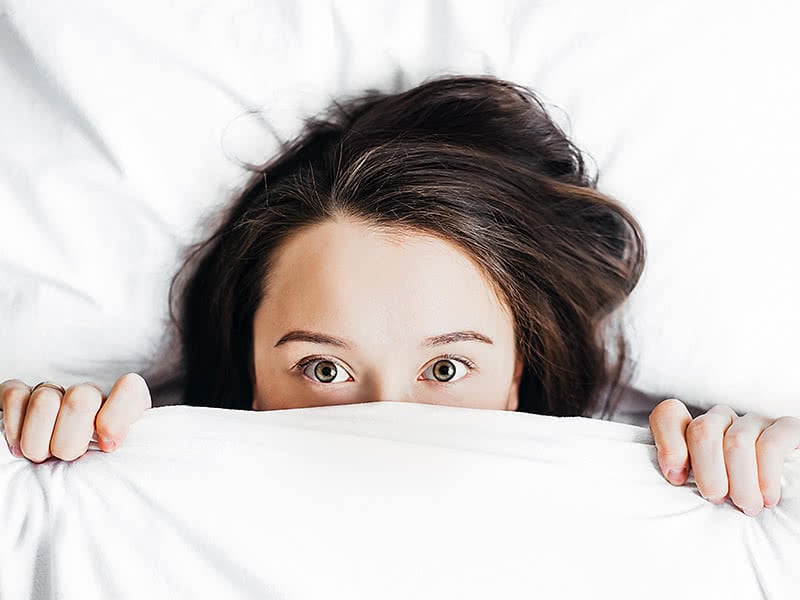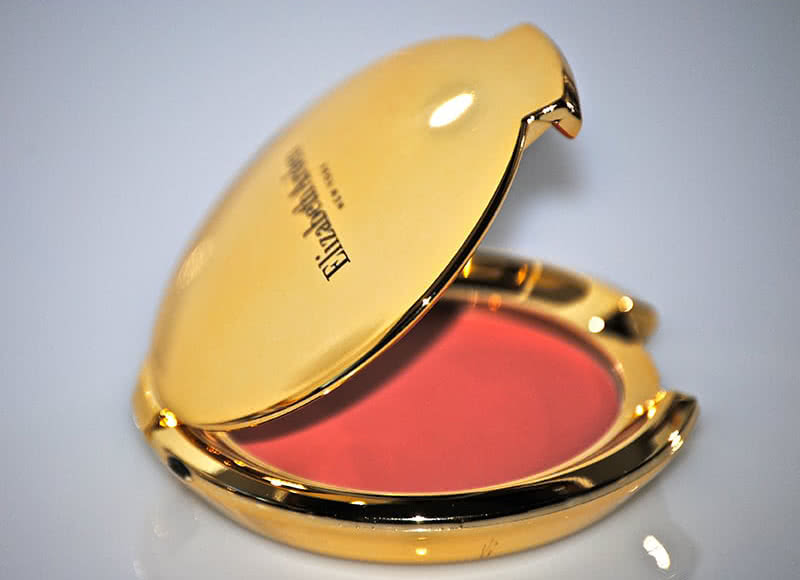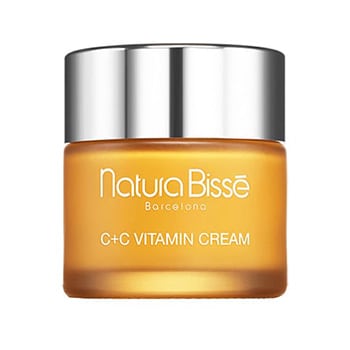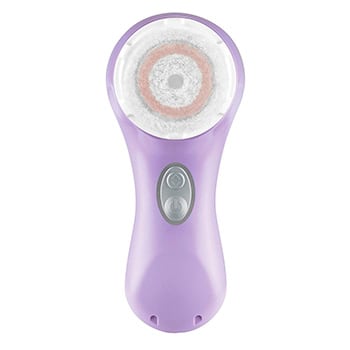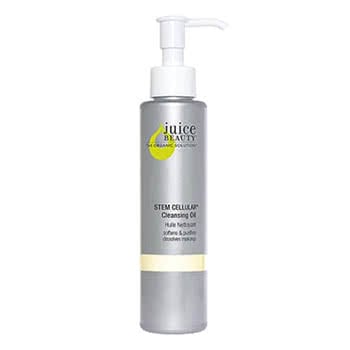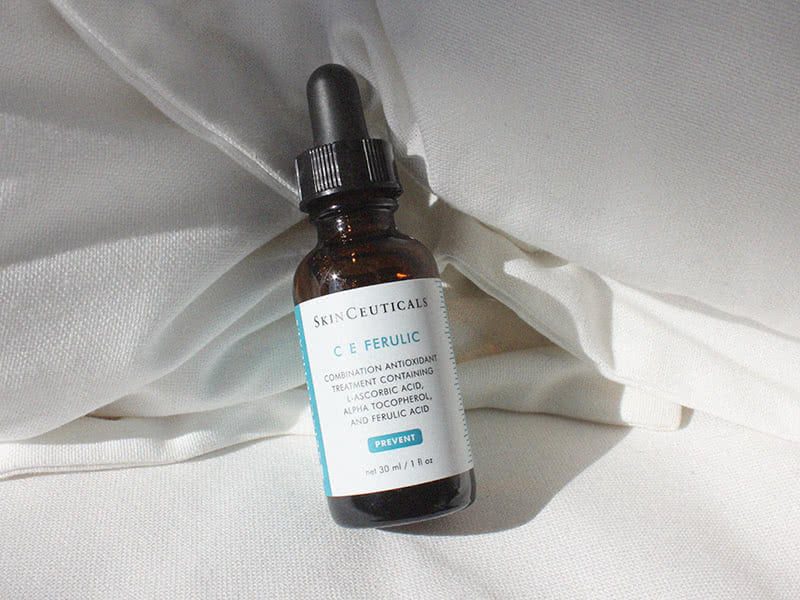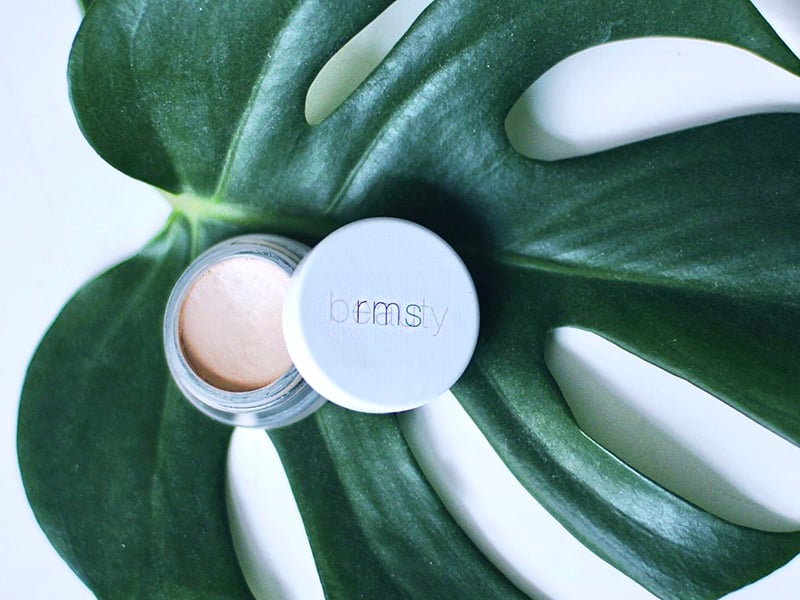At a glance
Did you wake up this morning with a horrible pimple in the middle of your face? Are breakouts appearing on your chin every month? We’ve all been there. Acne is an unfortunate skin condition that affects most people, teenagers and adults alike.
In this article, you will learn how to treat your acne quickly and effectively with natural solutions. Natural skin care has been proven to work for most people and will help you prevent nasty side effects that chemical alternatives might cause to your face.
Let’s start by understanding what acne means and why you have acne. You’ll then see exactly what solutions might work for you right now and the best routine to prevent acne. You’ll also discover how to avoid bad acne scars by supporting your skin’s natural healing process.
Table of contents
- What is acne: understanding acne
- 1. The cause: Why do you get acne
- 2. The symptoms: four types of acne
- 3. The damage: what causes acne scars
- How to treat and cure acne fast and right now
- Step 1: Cleanse your skin
- Step 2: Pop your pimple properly
- Step 3: Heal your breakout to avoid acne scars
- Step 4: Conceal with acne-friendly natural makeup
- When to see a doctor
- Terms and Definitions related to acne
- Acne definition
- Blackheads definition
- Whiteheads definition
- Papules definition
- Pimples definition
- Breakouts definition
- Blemish definition
- Conclusion
Treating acne fast in a nutshell
- Taking care of your skin can prevent acne from becoming worse.
- Acne is most common in teens and young adults but can affect everyone.
- Teenagers are most affected due to hormone changes during puberty.
- Women are also most affected due to hormone changes before their monthly period or after starting or stopping birth control.
- You should consult with a dermatologist if you have severe acne.
- You should avoid squeezing or popping pimples to reduce the risk of acne scars.

What is acne: understanding acne
The American Academy of Dermatology describes acne as a process by which “a pore in our skin clogs. This clog begins with dead skin cells. When the body starts to make lots of sebum, oil that keeps our skin from drying out, the dead skin cells can stick together inside the pore. Instead of rising to the surface, the cells become trapped inside the pore.[1]”
In a nutshell, acne appears when an excess of oil and dead skin cells clog a pore, causing bacteria to accumulate and inflame the skin. The result is a red and swollen bump.
While the production of sebum (oil) is natural and essential to maintain the elasticity of the skin, an excessive production of sebum combined with the presence of dead skin cells that might block a pore, is indeed a fertile ground for bacteria to multiply and inflame the skin.[2]
The unfortunate result is the appearance of whiteheads, blackheads or pimples, and usually appears on the face, forehead, chest, upper back and shoulders.
Acne is most common among teenagers but the Mayo Clinic recognizes that it can affect people of all ages. Women, particularly a week before their menstruation, can suffer from acne throughout their adulthood.[3]

1. The cause: Why do you get acne
Specialists from the Mayo Clinic identify four main factors that can cause acne breakouts:
- An excess of oil production
- Hair follicles clogged by oil and dead skin cells
- The accumulation of bacteria inside your pores
- An excess activity of androgens hormone
Acne will most often appear on your face, forehead, chest, and shoulders because that’s where we have the most oil-producing glands.
Aggravating factors: What makes acne worse
There are four things to keep in mind when treating acne as they may worsen your condition. According to the same research from the Mayo Clinic:
- Androgens hormones: these are a type of hormones that increase during puberty and your skin to create more oil (sebum). Women can also be affected before their menstruation, during pregnancy, or when using contraceptive pills.
- Your diet: medical studies found that skim milk, carbohydrate-rich foods, and chocolate can be a worsening factor for acne.[4]
- Certain medications: drugs that contain corticosteroids, testosterone or lithium.
- Stress: stress has indeed been proven to make acne worse for some people.
Unrelated factors: Myths that don’t have any impact on acne
People often assume that fatty food, bad hygiene, and makeup are the cause of acne. That’s not necessarily true. Specialists from the Mayo Clinic explain why that is the case:
- Fat and greasy foods have little to no effect on acne.: While you should, of course, eat a healthy diet, greasy food will not make your acne worse.
- Bad hygiene.: Pimples and breakouts aren’t caused by dirty skin. Quite the contrary, in fact, using face scrubs or harsh face soaps could irritate your skin and cause your sebaceous glands to produce even more oil.
- Makeup and cosmetics don’t necessarily worsen your acne.: You should be careful in using non-comedogenic makeup, however, to make sure that it doesn’t clog your pores and let your skin breath. You should also use a natural cleanser every night before going to bed.
2. The symptoms: four types of acne
When talking about acne in this article, we are referring to four types of acne. Their signs and symptoms vary depending on the severity of your condition:
- Blackheads: a pore clogged and inflamed but open to the surface and darken. A blackhead may look like a bit of dirt is stuck in your pore, but underneath the pore is actually filled with bacteria and oil.
- Whiteheads: very similar to a blackhead but the pore is not open to the surface. Instead, a white-colored bulge will appear under your skin.
- Papules: when a blocked hair follicle becomes inflamed with bacteria. Papules look like a small red and tender bump on your skin.
- Pimples: they are similar to papules but with pus at their tips. Pimples are raised red spots on your skin with a white center. They can be painful.
There are two more types of acne that are recognized by the American Academy of Dermatology: cysts and nodules. They happen when an acne inflammation goes deeper into the skin. They often require special treatments and will thus not be covered in this article.
3. The damage: what causes acne scars
Acne scars happen when you try to squeeze or pop a breakout, and your skin is left damaged. This is often the result of a poor healing process.
There are three types of acne scars:[5]
- Atrophic or depressed scars: a small gap on your skin surface, depressed scars sit below the surrounding skin. They appear because not enough collagen was produced while your acne wound was healing. They are most common on the face.
- Hypertrophic or raised scars: they are the opposite of the atrophic acne scars, the hypertrophic scar stand above the surface of the surrounding skin and are caused by too much collagen during healing. They are most common with chest and back.
- Dark spots: not quite a scar, but more like a skin discoloration left behind after a breakout has cleared. They would usually disappear on their own after a few months.
The good news is that acne scars can be treated. We explore the best natural treatments available today to fix your acne scars quickly (see healing section below).
But the best thing is to prevent them in the first place. Dermatologue Dr. Jennifer MacGregor recommends indeed to get your acne under control from the start and treat it correctly.[6]
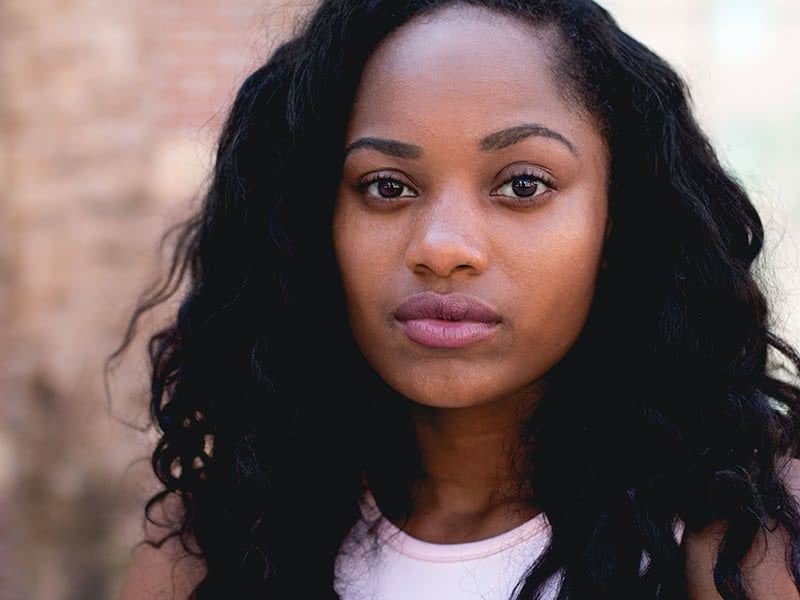
How to treat and cure acne fast and right now
Now that you understand what acne is, let’s look at what you can do about treating a pimple or a breakout right now.
Treating acne requires a good routine. We’ve laid out a four steps process for you:
- Cleanse your skin
- Pop your pimple properly
- Heal your breakout to avoid acne scars
- Conceal with non-comedogenic makeup
These four steps will help you get rid of acne fast and easy, using only natural products.
We want to emphasize that last point before beginning. Chemical treatments can be effective at getting rid of pimples quickly. But they can also create adverse effects, such as skin irritation and dryness, that will over time make your acne worse or create other problems. The FDA, for example, warned against rare but serious negative reactions to over-the-counter acne products that contained benzoyl peroxide and salicylic acid.[7]
The good news is that natural treatments exist and can work just as quickly as chemical products to clear out your pimples. Experts from the American Academy of Dermatology recommend, for example, the use of natural ingredients as an alternative to treat tricky skin conditions.[8]
Step 1: Cleanse your skin
While acne isn’t caused by bad hygiene, it is critical to keep your skin clean to avoid further infection.
Your cleansing routine should be gentle. You don’t want to damage your skin or stimulate more oil production by over-scrubbing your face. But it should be effective to make sure that dead skin cells and bacteria are removed.

Here are 5 essential tips to help you clean your skin effectively to prevent acne with natural solutions:
- Wash your face in the morning and evening with a gentle non-soap cleanser. Avoid harsh scrubs and abrasive chemicals as they might cause your skin to generate more oil as a result. From our experience, the Eminence Clear Skin Probiotic Cleanser
is one of the best cleansers for acne-prone skin.
- Use pore-clearing adhesive pads to deeply remove dirt, oil, and plugs from your pores once a week. Simply patch the pad on your wet skin, let it dry for 10 minutes, then peel it off. The Biore Deep Cleansing Pore Strips
are the best ones in our opinion. You might be surprised to see what they caught after removing them.
- Remove your makeup before going to bed and before exercising. Old makeup, especially the comedogenic ones that clog your pores, can encourage bacteria to multiply and infect your skin, thus causing acne. The best is to use a natural makeup remover like La Roche-Posay Toleriane Cleanser
.
- Don’t use too many products. The most important is to clean the pimple while keeping your skin balanced to facilitate the natural healing process.
- Keep your face clear of bacteria. If you use hair products, for example, make sure that your hair is off your face. Be careful with your hands and phone as well, as they will often be dirty.
Step 2: Pop your pimple properly
After cleaning your face, you might be very tempted to squeeze a pimple to try to pop out your acne.
Wait! Not every breakout should be popped as it might result in worse redness and swelling of the area, but also to acne scars afterward. If done improperly, you might also end up pushing the bacteria deeper into your pores or adding new of bacteria from your fingers into the open breakout.

When should you pop a pimple? Dermatologist Zakiya Rice, from the Emory University School of Medicine in Atlanta, says that “it’s best to let a pimple run through its lifespan.[9]” Left alone, a blemish will heal itself within a week. Popped improperly, it can last much longer or leave you with acne scars. The best solution might be to try and conceal it in the meantime with a non-comedogenic makeup (more on that below in step 4).
That said, most of us don’t want to wait for a week to make a pimple disappear. If you want to squeeze the pus out, dermatologist Cynthia Bailey recommends the following steps:[10]
- Wait until a white head appears on your pimple. The pus needs to be close to the surface and ready to be drained out.
- Thoroughly wash your hands and nails with warm water and soap.
- Sterilize a pin with a lighter. Let it cool, then wipe it with alcohol disinfectant.
- Wrap your fingers with a clean tissue.
- Hold the clean pin parallel to your skin and gently pierce the very tip of the pimple’s white center.
- Softly squeeze with your fingers around the pimple to extract the pus.
- Once all the pus has been drained, apply more alcohol on the open breakout and keep it clean to ensure proper healing.
Step 3: Heal your breakout to avoid acne scars
Once a pimple has been drained and cleaned up, you’ll need to support your skin’s natural healing process to avoid long-lasting acne scars. Popping a pimple leaves an open wound on your face, so it will take a few days to heal itself.
The most important is to find a routine that works for you. You need a daily skin care routine that you can repeat in the morning and in the evening, and that will support your skin’s natural defenses.

We’ve designed an entire skin care routine for acne-prone skin. The most important are the following 3 steps:
- Clean your face with a natural cleanser. We recommend the Eminence Clear Skin Probiotic Cleanser (
). This cleanser contains tea tree oil that neutralizes bacteria as well as astringent willow bark that controls oil production. It’s perfect for acne condition.
- Follow with a natural toner to tighten your pores. The Mario Badescu Special Cucumber Lotion
(
) is one of the best for acne concerns because its mild astringent effectively eliminate existing acne bacteria while preventing the appearance of pimples. It’s also a non-drying and non-irritating formula.
- Finally, use an oil-free, water-based moisturizer such as best-seller TreeActiv Acne Eliminating Face Cream
(
). It contains tea tree oil, peppermint water, vitamin E, and jojoba oil to prevent breakouts while unclogging pores.
Step 4: Conceal with acne-friendly natural makeup
Wheter you popped your pimples or not, acne will leave a dark bump on your face for a few days before healing. It doesn’t mean that you should let it be seen by everyone though.
You can use an acne-friendly concealer to mask your pimple. Hollywood makeup artist Tasha Reiko-Brown says that “when you’re trying to hide a pimple, your aim is to take away the redness, not flatten it out. If you keep piling on layers of makeup, you’ll be creating a little mountain. It may not be a red mountain, but it will still be bigger and more noticeable than when you started out.[10]”
What kind of natural makeup is good for acne? Any makeup that is non-comedogenic will do. The most important is to avoid makeup that risks further clogging your pores.
We recommend the excellent Elizabeth Arden Ceramide Cream Blush. Its formula is loaded with skin-perfecting nutrients, cell-repairing ceramides, energizing vitamins and antioxidants. This cream blush lifts and contours the look of cheeks, blushing them with soft, vibrant color. It’s non-drying and oil-free (
When to see a doctor
If self-care remedies don’t clear your acne within a week or so, the Mayo Clinic recommends that you see your primary care doctor. They will be able to prescribe stronger medications if necessary. If acne persists or is severe, you can also consult with a dermatologist, a doctor who specializes in the skin.[3]
Note that in older adults, a sudden onset of severe acne may signal an underlying disease requiring medical attention. Don’t wait to consult your doctor when in doubt.

Terms and Definitions related to acne
People often talk about acne to refer to pimples and breakouts. As described above, there are four major distinct types of acne. Let’s see exactly what each means.
Acne definition
Acne is defined by the National Institute of Arthritis and Musculoskeletal and Skin Diseases as “a disorder that affects the skin’s oil glands and hair follicles. The small holes in your skin (pores) connect to oil glands under the skin. These glands make an oily substance called sebum. The pores connect to the glands by a canal called a follicle. Inside the follicles, oil carries dead skin cells to the surface of the skin. A thin hair also grows through the follicle and out to the skin. Sometimes, the hair, sebum, and skin cells clump together into a plug. The bacteria in the plug cause swelling. Then when the plug starts to break down, a pimple grows.[2]”
The term is thus generally used to refer to various types of skin infections whereas pus accumulates inside your pores.
Blackheads definition: what does it mean?
Blackheads are a type of acne whereas a pore is clogged and inflamed but open to the surface. As a result, the part exposed to the outside will darken. A blackhead may look like a bit of dirt, but the pore underneath is actually filled with bacteria and oil.
Whiteheads definition: what does it mean?
Whiteheads are very similar to a blackhead, but instead of being open, a thin layer of skin covers the infection. As a result, a white-colored bulge will appear under your skin.
Papules definition
Papules appear when a blocked hair follicle is inflamed due to the presence of bacteria. Papules look like a small red and tender bump on your skin and might be slightly painful.
Pimples definition: what does it mean?
Pimples are similar to papules but with pus at their tips. Pimples are raised red spots with a white head. They tend to be even more painful than papules and will often take more time to clear out and heal.
Breakouts definition
The Merriam Webster Dictionary defines breakouts as an eruption or inflammation of the skin.[11] It’s a general term used to refer broadly to the various types of acne mentioned above, usually papules and pimples.
Blemish definition
The Merriam Webster Dictionary defines blemishes as noticeable imperfections that seriously impairs appearance.[12] The term is also broadly used to refer to the various types of acne mentioned above, usually blackheads and whiteheads.
Conclusion
Acne, in its various forms, is a very common problem that can be frustrating to treat. 80% of Americans suffer from some degree of acne in their lives.
In addition to a healthy lifestyle and diet, the skin routine mentioned above will help in most cases. Using natural products to treat acne is particularly important if you want to avoid other negative effects from more aggressive chemical alternatives.
Keep your face and hands clean and avoid touching your pimples as much as possible. Follow our acne skin routine for a few days and you should rapidly see improvements.

Further reading recommendations
We’ve used several authoritative sources to write this article. We recommend that you review them if you want to learn more about acne, want to investigate a particular aspect of the condition or want to stay up-to-date with the latest medical research.
The Mayo Clinic, the National Institute of Arthritis and Musculoskeletal and Skin Diseases, and the American Academy of Dermatology each have excellent in-depth resources on acne. We recommend you start there:
- https://www.mayoclinic.org/diseases-conditions/acne/symptoms-causes/syc-20368047
- https://www.niams.nih.gov/health-topics/acne
- https://www.aad.org/public/diseases/acne-and-rosacea/acne
The Office on Women’s Health at the U.S. Department of Health and Human Services also has two resources specifically for women that provide a good overview of acne:
The U.S. Food and Drug Administration published an important announcement regarding rare but serious hypersensitivity reactions with certain over-the-counter topical acne products:
If you want to explore acne even further, we recommend the following publications that were used when writing this article:
- “Acne vulgaris and acne rosacea.” by Rakel D, Integrative Medicine. 4th ed., 2018.
- “Evidence-based recommendations for the diagnosis and treatment of pediatric acne.” by Eichenfield LF, et al., Pediatrics, 2013.
- “The changing faces of acne.” by Dreno B., British Journal of Dermatology, 2015.
- “Guidelines of care for the management of acne vulgaris.” by Zaenglein AL, et al., Journal of the American Academy of Dermatology, 2016.
- “Management of acne scars: Fulfilling our duty of care for patients.” by Sanchez Viera M., British Journal of Dermatology, 2015.
Authors: Ashley Nelson and Samantha Woodworth
Last updated: September 7, 2018
- Acne: Who Gets And Causes by The American Academy of Dermatology, 2018.
- Acne, by the National Institute of Arthritis and Musculoskeletal and Skin Diseases, 2018.
- Acne, Symptoms & causes, by the Mayo Clinic, 2018.
- Double-blind, placebo-controlled study assessing the effect of chocolate consumption in subjects with a history of acne vulgaris., by Caperton C, et al., The Journal of Clinical and Aesthetic Dermatology, 7:19, 2014.
- How to Best Treat Acne Scars, by Mandy Ferreira and Cynthia Cobb, Healthline, March 1, 2018.
- Jennifer L. MacGregor is a Board Certified dermatologist with fellowship training in cutaneous laser surgery and dermatologic procedures at the Union Square Laser Dermatology.
- FDA warns of rare but serious hypersensitivity reactions with certain over-the-counter topical acne products, U.S. Food and Drug Administration, first published on June 25, 2014, last updated on January 15, 2016.
- Dermatologist shines light on natural ingredients used in new topical treatments for hyperpigmentation, by the American Academy of Dermatology, March 17, 2014.
- Zakiya P. Rice, MD, FAAD, AAD Fellow, Certified in dermatology by the American Board of Dermatology.
- Before You Pop a Pimple, by Shelley Levitt, WebMd.
- Breakouts definition, by the Merriam Webster Dictionary, 2018.
- Blemish definition, by the Merriam Webster Dictionary, 2018.
